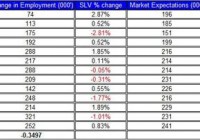Couch Potato Model Portfolios For 2015
Call off the hounds: I have finally updated my model Couch Potato portfolios for 2015. Full details appear on the permanent Model Portfolios page , but here are the new versions in downloadable PDF format: You’ll notice some significant changes this year: I have dropped the Complete Couch Potato and Über-Tuber from the lineup. All of the model portfolios now include only traditional index funds tracking the major asset classes: no REITs, real-return bonds, value stocks or small-cap stocks. The new lineup presents three options, with the key difference being the type of product. Option 1, from Tangerine , is a one-fund solution that’s ideal for investors who value simplicity. Option 2, the TD e-Series funds , offers more flexibility and lower cost. Option 3, built from Vanguard ETFs , is the cheapest option, but also the most difficult to manage for new investors. None of the options include ETFs traded on U.S. exchanges. Each option now includes several different asset allocations, ranging from a conservative (70% bonds and 30% stocks) to a aggressive (10% bonds and 90% stocks). The older model portfolios were all 40% bonds and 60% stocks, the traditional mix in a balanced portfolio. For each option and asset mix, we present performance data going back 20 years (1995 through 2014), compiled by Justin Bender . Since none of the funds has a track record that long, we have filled in the gaps using index data minus the MER of the fund in question. This is an imperfect but reasonable proxy for how an index fund would have performed. I thought long and hard about these changes, because I know many readers currently use one of the older model ETF portfolios. But it has now been more than five years since I launched this blog, and I have corresponded with hundreds of investors during that time. I’ve also worked directly with dozens more through PWL Capital’s DIY Investor Service . That depth of experience has given me a few insights. First, simple is usually better than complex. You can now build a portfolio that includes hundreds of bonds and thousands of stocks in some 40 countries using just three ETFs, all for a cost of less than 0.20%. No one needs to diversify more broadly than that. A skilled portfolio manager may be able to boost returns slightly by moving beyond traditional index funds in the core asset classes. But many DIYers make costly mistakes when they try to juggle too many funds. Meanwhile, there are exactly zero investors in the universe who failed to meet their financial goals because they did not hold global REITs or small-cap value stocks. Using U.S.-listed ETFs is a another example: the management fees and withholding taxes may be lower, but the steps involved in currency conversion can be complicated and it’s easy to make errors that wipe out any potential savings. If you don’t believe me, try explaining Norbert’s gambit to your mom. These model portfolios are not intended to reduce MERs and taxes to an absolute minimum. The suggested asset allocations were not created using Markowitz’s efficient frontier or portfolio optimization software. They are simply designed to provide broad diversification and low cost while remaining easy to manage on your own. So try not to agonize over the small details: just choose one of the model portfolios with an appropriate amount of risk and get started. It’s OK if convenience trumps cost, especially for young investors with small portfolios: remember, an additional cost of 0.10% works out to $0.83 a month for every $10,000 in your account. The cost of sitting in cash and scratching your head is much higher. And the peace of mind that comes with a simple investing strategy is priceless. Now that you’ve read this, are you Bullish or Bearish on ? Bullish Bearish Sentiment on ( ) Thanks for sharing your thoughts. Why are you ? Submit & View Results Skip to results » Share this article with a colleague
